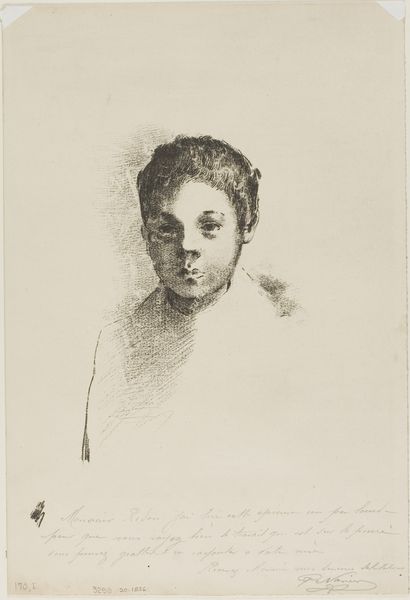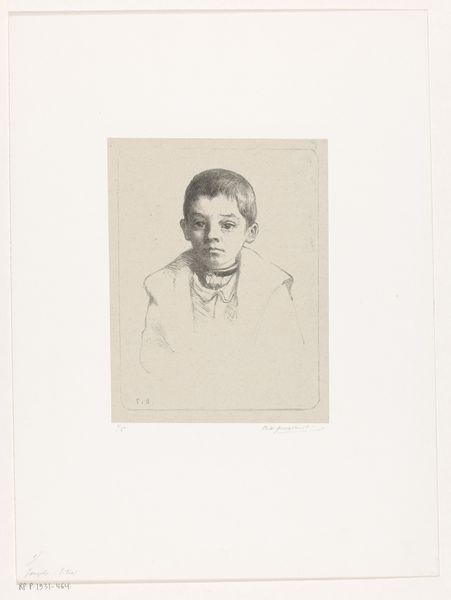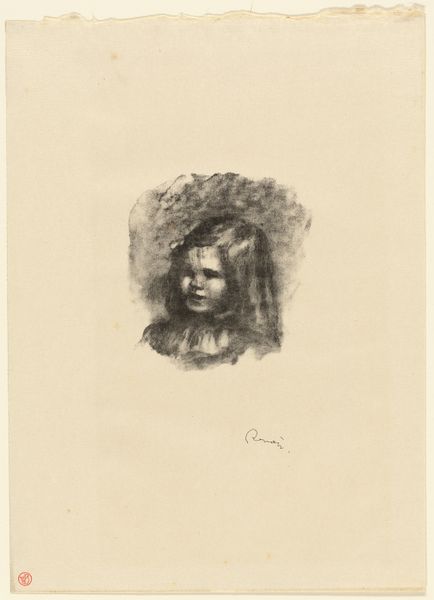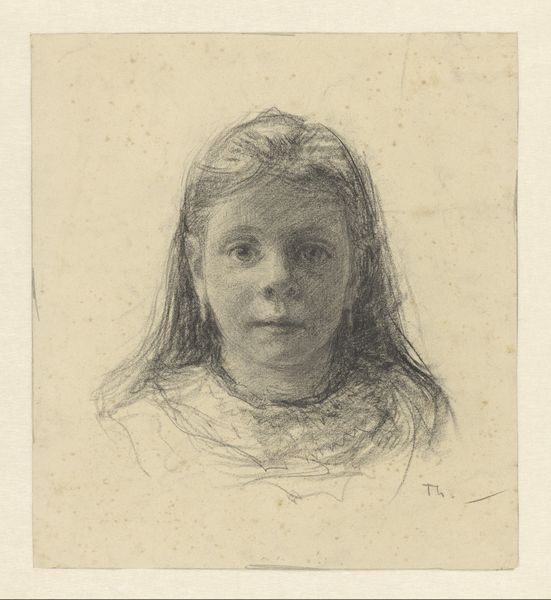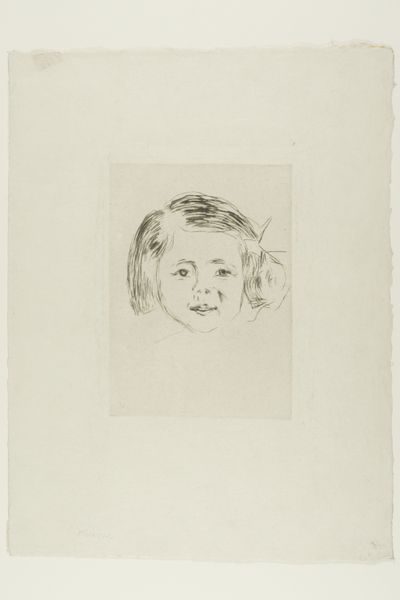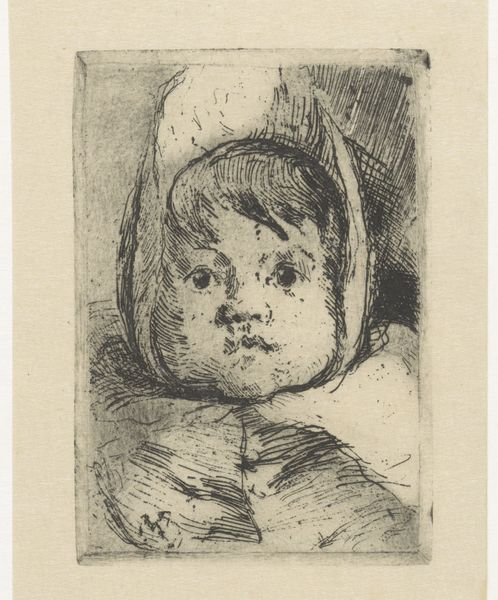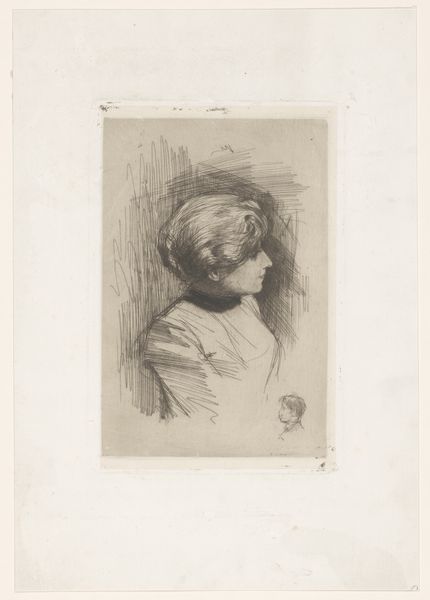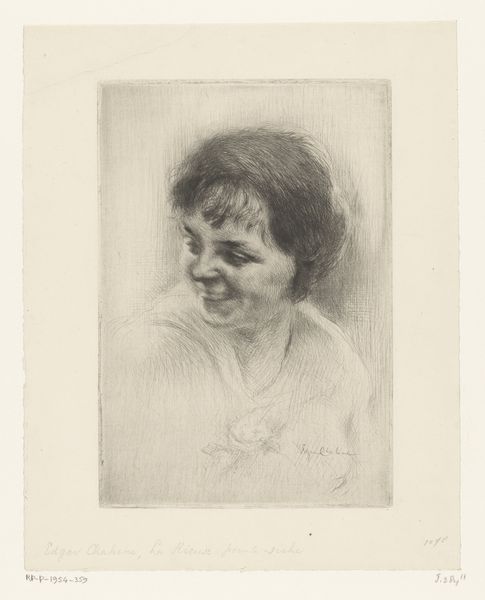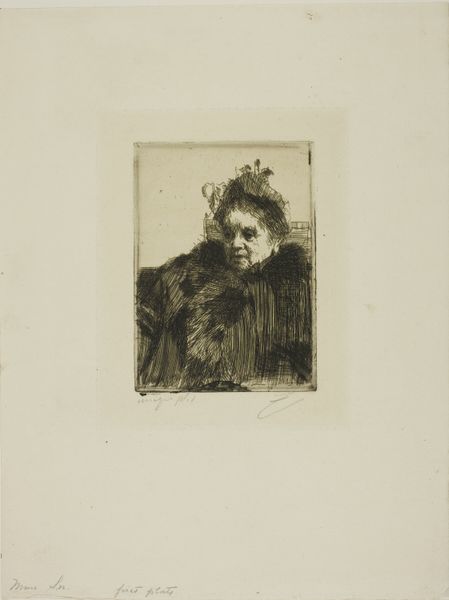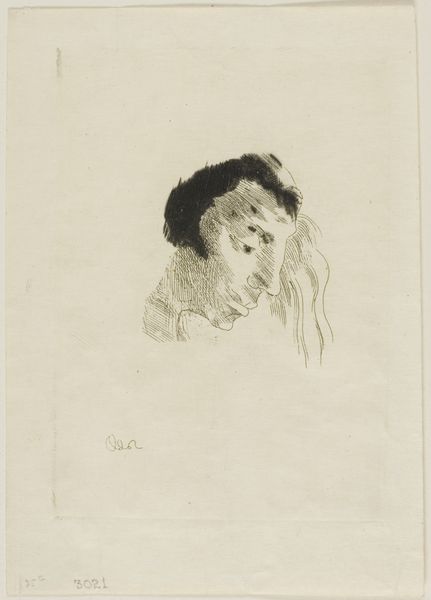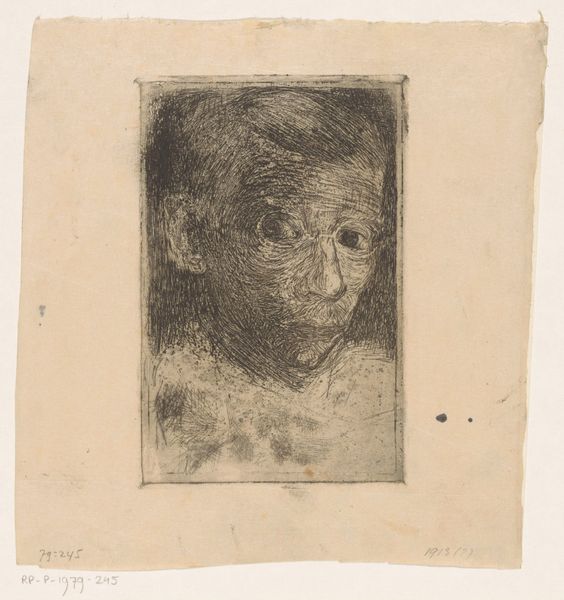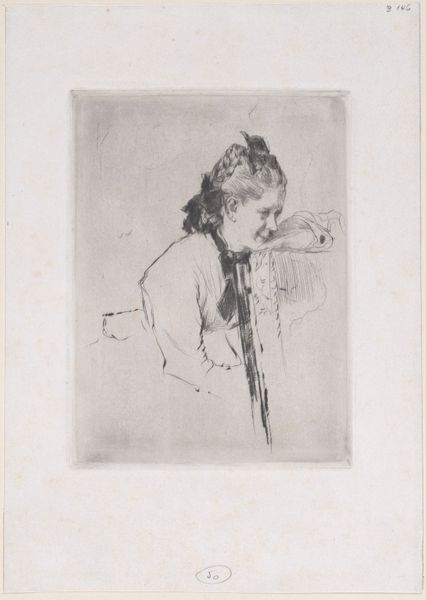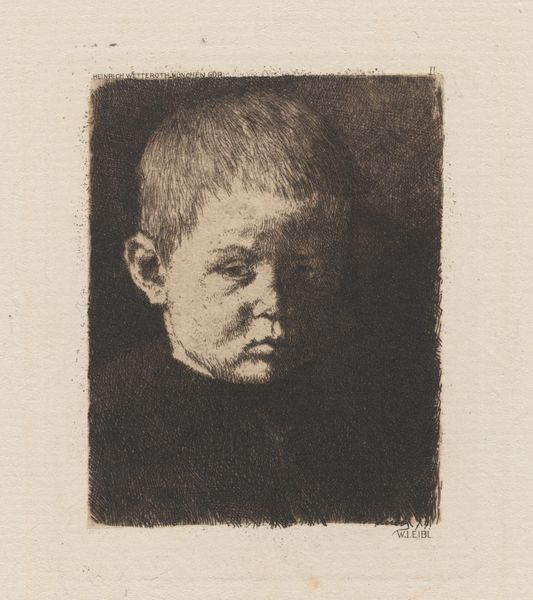
drawing, lithograph, print, paper, ink, charcoal
#
portrait
#
drawing
#
lithograph
# print
#
charcoal drawing
#
paper
#
ink
#
pencil drawing
#
portrait drawing
#
charcoal
#
post-impressionism
Dimensions: 200 × 130 mm (image); 319 × 251 mm (sheet)
Copyright: Public Domain
Editor: This is Odilon Redon's "Ari," created in 1898. It’s a lithograph, a type of print, on paper, and currently resides here at the Art Institute of Chicago. There’s a real tenderness to the piece – the softness of the charcoal and the way the figure seems to emerge from the shadows. What catches your eye in this work? Curator: It's interesting that you mention the shadows. Redon was working at a time of great social upheaval, the rise of industrialism, anxieties about modernity… This piece speaks to a retreat from the sharp, clear realities that were increasingly defining the world. We see it reflected even in the artistic movements. Impressionism, with its focus on fleeting moments of light, giving way to something more interior and dreamlike. How might "Ari" reflect or respond to that shift? Editor: Well, unlike the bright, outdoor scenes often associated with Impressionism, "Ari" is quite subdued. The soft focus seems more about feeling than seeing. Maybe it is a commentary on industrialization because instead of clear, distinct lines we see a kind of blurring of reality. Curator: Exactly. And consider who had access to art, who was depicted in it, and who had the power to define beauty. Often these decisions came down to powerful political structures or rich benefactors who helped fund art creation and dissemination. Redon seems to intentionally resist that traditional academic approach by focusing on emotional evocation. Are there other possible meanings suggested here? Editor: Perhaps it shows vulnerability and intimacy, which are aspects often missed with art focused on those in power. Curator: Indeed, shifting focus to the internal life of individuals, as art started reflecting on a personal subjective and intimate human experience rather than just pure depiction of wealth or status, makes for an artistic revolution. This was a huge paradigm shift occurring in the late 19th Century. It challenges viewers even today. Editor: It’s fascinating to see how "Ari," on the surface just a portrait, actually holds so much historical and social commentary! Thank you! Curator: My pleasure. Thinking about art as part of the fabric of society reveals so much!
Comments
No comments
Be the first to comment and join the conversation on the ultimate creative platform.
